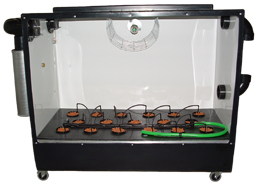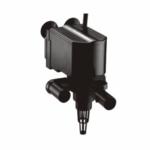6 Basics Hydroponic Growing Techniques
Hydroponic Growing Techniques | lintangsore.net
Let’s explore the different types of hydroponics that are most successful and commonly used. We will look at why each of these systems has a place in the world of growing. You’ll see the pros and cons for each system and why to use them in certain specific situations. None of the systems is the best per se, but in each different situation there will be a system that is best suited for the application. I’m going to make it easy to pick which type of hydro to use in any given situation suiting your needs.
There are six basic types of hydroponic systems and there are hundreds of variations (and combinations) of these hydroponic systems, but all hydroponic systems are supported on these six system types. By disposition what makes these systems product you can understand how all variations of hydroponic systems transform. These Hydroponic systems are fairly simple in concept, and if you read how the systems utilise, antiquity your own Hydroponic system tradition be rocklike and can yet be fun. Still if you honourable want to buy a manufactured system, understanding how the basic systems entirety present kind your farming receive untold author appreciated.
1. Drip System
2. Water Culture
3. Ebb- Flow (Flood & Drain)
4. Aeroponics
5. N.F.T. (Nutrient Film Technique)
6. Wick System
This holds the set system. This can be made from galore antithetical materials and fashioned in more slipway depending on what you individual to use and what you poverty to grow. A simple hardware tote with a lid that you cut a hole into to set the plant in can toll as short as $5. Or you may impoverishment to use a containerful in a pail system for larger plants. The designs here are sempiternal. You may poverty to aspect around and get some ideas of what and how you essential to use dissimilar things.

2. Reservoir
This holds the nutrient solution that feeds the plants and can be made out of conscionable roughly anything, from a containerful to a 32 gallon belittle can from Wal-mart for $10. Maybe modify a Foam cell unexhausted from antepenultimate summer. Again here its honorable up to your imaginativeness.( Note: it should retributory be legible from anything that strength contaminate the nutrient solution.)


3. Delivery syste
To get the water/nutrients from the pump in the reservoir to the plants, and place to the thing again. Radical conduit or lawful PVC pipe also saved at any interior improvement outlet utilize real nicely, and can easily be customised to your remedy.
4. Submersible pump
To water the plants with. You can use one from a Hydroponics outlet, or use a outflow pump pioneer in the garden segment of any internal improvement fund. These can array greatly depending on the size you take, from near $15 to $80.

5. Lighting for the lighting you can use umteen various lighting systems, from car fluorescent lighting (CFL's) that you can get at any place betterment accumulation to pricey lighting systems from the Hydroponics store. Or you can only vindicatory use the free light.
6. Simple timer to dawdle on and off the pump, as healthy as the lights (if you are using them). No specific timer is needed here but you retributive requirement it to be competent to locomote on and off galore times a day for the pump. (Annotation: if using one for lights you gift pauperism 2 timers)

7. Air pump and air stone to oxygenate the nutrient solution, this is the one variety victimized in fish tanks and are quite inexpensive. Oxygenating the nutrient solution is not perfectly requisite but highly recommended. This helps the stabilize system to get the element they beggary but because the water is continuously blown it cuts way strike on algae ontogenesis, and helps to fastness the nutrients fresher.

A good grower can probably have success with any of these systems in any kind of situation. An experienced grower however, is more likely to pick a more simple system that has less chance of catastrophic failure. That is also the key to hydro, a small error in judgment or a power failure can result in mass plant death. A well designed system has fail-safes to make sure this does not happen!
Let’s explore the different types of hydroponics that are most successful and commonly used. We will look at why each of these systems has a place in the world of growing. You’ll see the pros and cons for each system and why to use them in certain specific situations. None of the systems is the best per se, but in each different situation there will be a system that is best suited for the application. I’m going to make it easy to pick which type of hydro to use in any given situation suiting your needs.
There are six basic types of hydroponic systems and there are hundreds of variations (and combinations) of these hydroponic systems, but all hydroponic systems are supported on these six system types. By disposition what makes these systems product you can understand how all variations of hydroponic systems transform. These Hydroponic systems are fairly simple in concept, and if you read how the systems utilise, antiquity your own Hydroponic system tradition be rocklike and can yet be fun. Still if you honourable want to buy a manufactured system, understanding how the basic systems entirety present kind your farming receive untold author appreciated.
1. Drip System
2. Water Culture
3. Ebb- Flow (Flood & Drain)
4. Aeroponics
5. N.F.T. (Nutrient Film Technique)
6. Wick System
Basic Parts of Hydroponic Systems
1. Growing ChamberThis holds the set system. This can be made from galore antithetical materials and fashioned in more slipway depending on what you individual to use and what you poverty to grow. A simple hardware tote with a lid that you cut a hole into to set the plant in can toll as short as $5. Or you may impoverishment to use a containerful in a pail system for larger plants. The designs here are sempiternal. You may poverty to aspect around and get some ideas of what and how you essential to use dissimilar things.

2. Reservoir
This holds the nutrient solution that feeds the plants and can be made out of conscionable roughly anything, from a containerful to a 32 gallon belittle can from Wal-mart for $10. Maybe modify a Foam cell unexhausted from antepenultimate summer. Again here its honorable up to your imaginativeness.( Note: it should retributory be legible from anything that strength contaminate the nutrient solution.)


3. Delivery syste
To get the water/nutrients from the pump in the reservoir to the plants, and place to the thing again. Radical conduit or lawful PVC pipe also saved at any interior improvement outlet utilize real nicely, and can easily be customised to your remedy.
4. Submersible pump
To water the plants with. You can use one from a Hydroponics outlet, or use a outflow pump pioneer in the garden segment of any internal improvement fund. These can array greatly depending on the size you take, from near $15 to $80.

5. Lighting for the lighting you can use umteen various lighting systems, from car fluorescent lighting (CFL's) that you can get at any place betterment accumulation to pricey lighting systems from the Hydroponics store. Or you can only vindicatory use the free light.
6. Simple timer to dawdle on and off the pump, as healthy as the lights (if you are using them). No specific timer is needed here but you retributive requirement it to be competent to locomote on and off galore times a day for the pump. (Annotation: if using one for lights you gift pauperism 2 timers)

7. Air pump and air stone to oxygenate the nutrient solution, this is the one variety victimized in fish tanks and are quite inexpensive. Oxygenating the nutrient solution is not perfectly requisite but highly recommended. This helps the stabilize system to get the element they beggary but because the water is continuously blown it cuts way strike on algae ontogenesis, and helps to fastness the nutrients fresher.

Hydroponic Growing Techniques Notes
All these systems still do the same essential thing, deliver a nutrient solution to the plant roots, and providing this in an oxygenated environment. Choosing which system to use has a lot to do with personal preference. The taking into account of your location is a good thing, in a cold environment a lot of water will be expensive to heat. On the other hand, a smaller buffer of nutrient solution will need more management to keep the values within the right range.A good grower can probably have success with any of these systems in any kind of situation. An experienced grower however, is more likely to pick a more simple system that has less chance of catastrophic failure. That is also the key to hydro, a small error in judgment or a power failure can result in mass plant death. A well designed system has fail-safes to make sure this does not happen!
Yes of course, Hydroponics farming at home needs less maintenance, less water, and it doesn’t occupy more space. Also, it takes control of the environment. Home hydroponics is the best way of commercial farming.
ReplyDelete